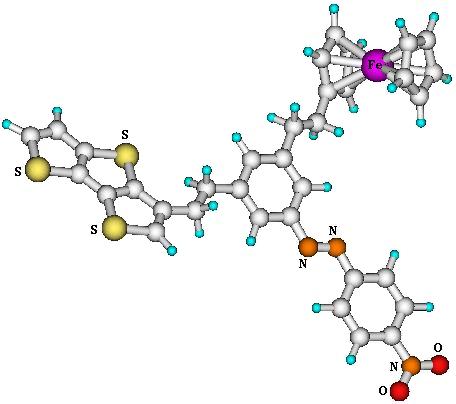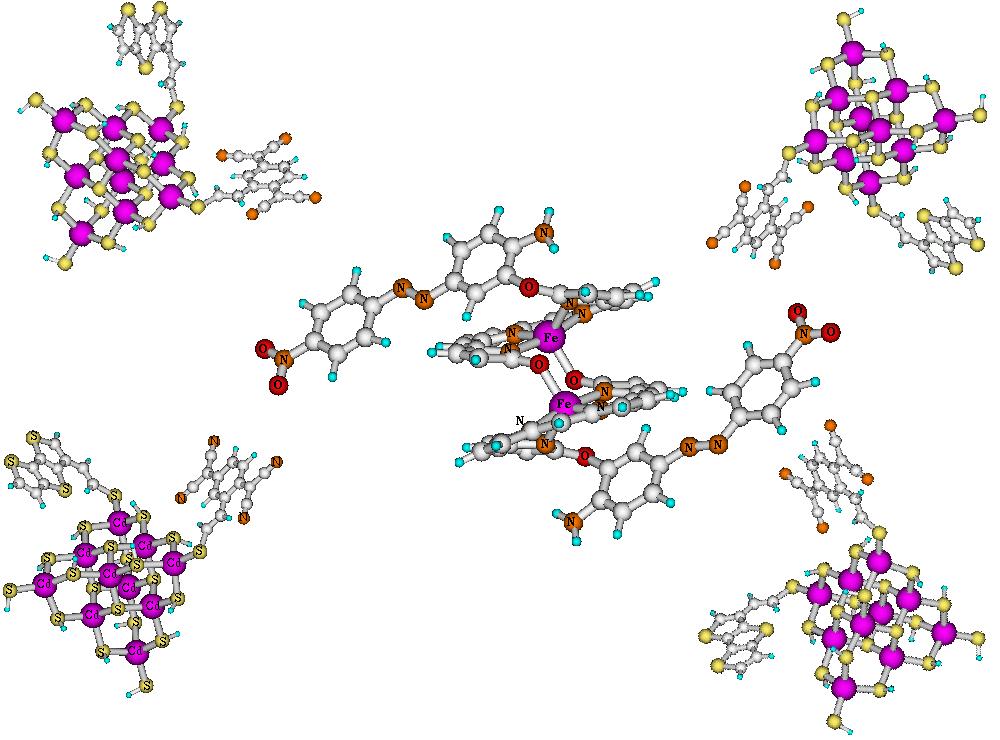
Hardware of Molecular Electronics Digital and NMR Quantum Computers Quantum Mechanically Designed
Arvydas Tamulis, Jelena Tamuliene, Vykintas Tamulis
Institute of Theoretical Physics and Astronomy, A. Gostauto 12, 2600 Vilnius, Lithuania;
phone: +(370-2)-225361; fax: +(370-5)-2125361; e-mail: tamulis@itpa.lt
© Copyright by Arvydas Tamulis, Jelena Tamuliene and Vykintas Tamulis 2002.
All rights reserved.
Quantum mechanically designed hardware of molecular electronics digital computers and molecular NMR quantum computers are presented in this book.
In the first part are presented several two and three variable gates of molecular electronics digital computers. Maximal length of these molecular electronics digital logic gates are no more than four nanometers and and maximal width 2.5 nm. The results of light induced internal molecular motions in azo-dyes molecules [1-3] have been used for the design of light driven logically controlled (OR, AND, NOR, NAND) molecular machines composed from organic photoactive electron donor dithieno[3,2-b:2',3'-d]thiophene, tetrathiofulvalene (TTF) or ferrocene molecules and electron accepting 4,5-dinitro-9-(dicyanomethylidene)-fluorene (DN9(CN)2F), tetracyano-indane, and moving azo-benzene fragment (see two gates in figures bellow). After detail investigations of various electron insulator bridges between electrondonor and electronacceptot parts occurs that non-conjugated bridge -CH2-CH2- should be applied to join thiophene and DO3 molecules in order to design OR logical function that significantly improved quality in comparison with our previous designed devices [1-3]. Density functional theory (DFT) B3PW91/6-311G model calculations were performed for the geometry optimization of these molecular electronics logical gates. Applied DFT time dependent (DFT-TD/B3PW91) method and our visualization program give absorption spectra of designed molecular gates and show from which fragments electrons are hopping in various excited states.


There are designed set of single supermolecule fluorescencing devices containing OR and AND logic functions.
In the second part of this book are presented quantum mechanical investigations of hydrogen and nitrogen atom Nuclear Magnetic Resonance (NMR) values of Cu, Co, Zn, Mn and Fe biliverdin derivatives and their dimmers and aza-fullerene C48N12 adducts using ab initio Hartree-Fock (HF) and DFT methods indicate that these modified derivatives should generate from one to seven and eleven, twelve, eighteen, nineteen Quantum Bits (QuBits). The chemical shifts are obtained as the difference of the values of the tetramethylsilane (Si(CH3)4) and ammonia (NH3) molecules Gauge-Independent Atomic Orbital (GIAO) nuclear magnetic shielding tensor on the hydrogen and nitrogen atoms and that of the magnetically active molecules.
There are designed several single supermolecule devices containing molecular electronics digital logic gates, photoactive molecular machines and elements of molecular NMR quantum computers that induced idea of molecular quantum computing life. Designed several supramolecular ControlNot NMR quantum computing gates (see figure bellow).

[1] Tamulis, A., Tamuliene, J. (2001) Ab Initio Quantum Chemical Design of Single Supermolecule Photoactive Machines and Molecular Logical Devices, Report to the contract US AF EOARD contract F61775-00-WE050, http://65.105.56.185/master24/category53/A524393.html
[2] Tamulis, A., Rinkevicius, Z., Tamuliene, J., Tamulis, V., Graja, A., Gaigalas, A.K. (2002) Quantum Chemical Design of Light Driven Molecular Logical Machines, in A. Graja, B. R. Bulka, F. Kajzar (eds.) NATO Science Series II. Mathematics, Physics and Chemistry, Molecular Low Dimensional and Nanostructured Materials for Advanced Applications", Kluwer Academic Publishers, Dordrecht, 59, 209-219.
[3] Tamulis, A., Tamuliene, J., Tamulis, V. (2002) Quantum Mechanical Design of Photoactive Molecular Machines and Logical Devices, chapter in American Scientific Publishers Handbook on Photochemistry and Photobiology, accepted for publication.